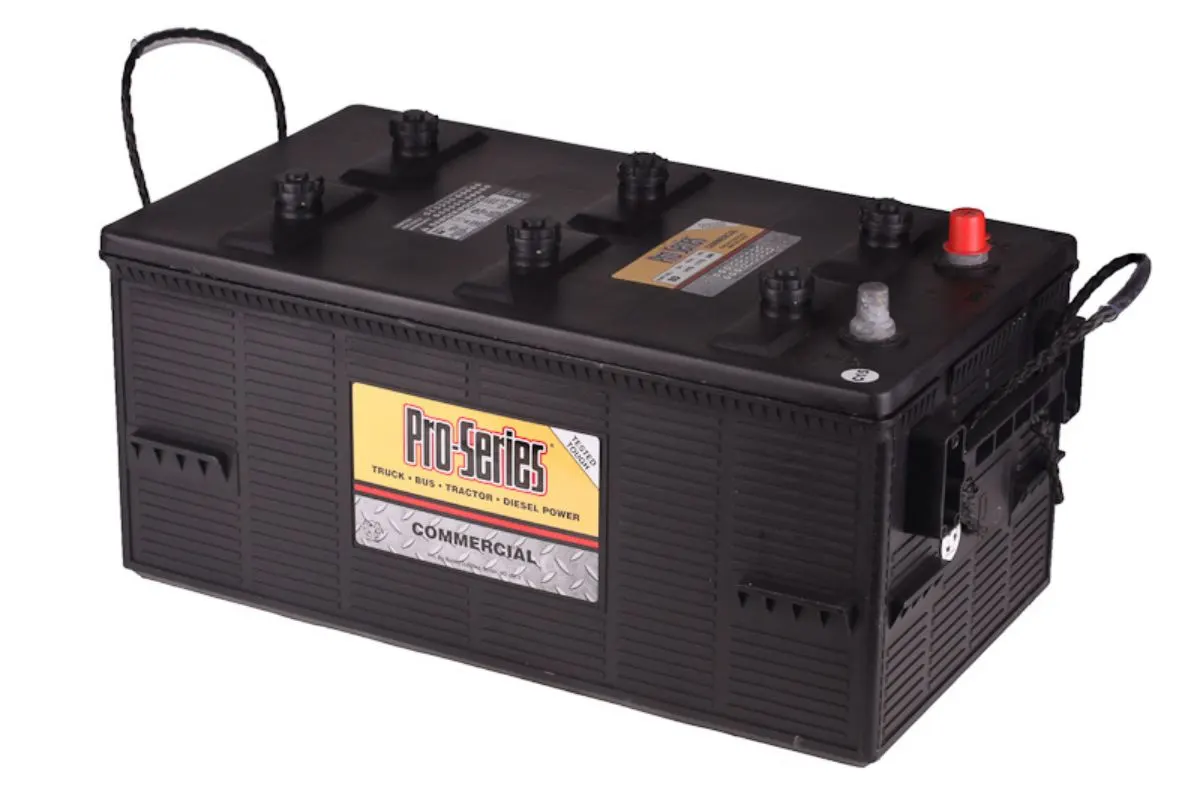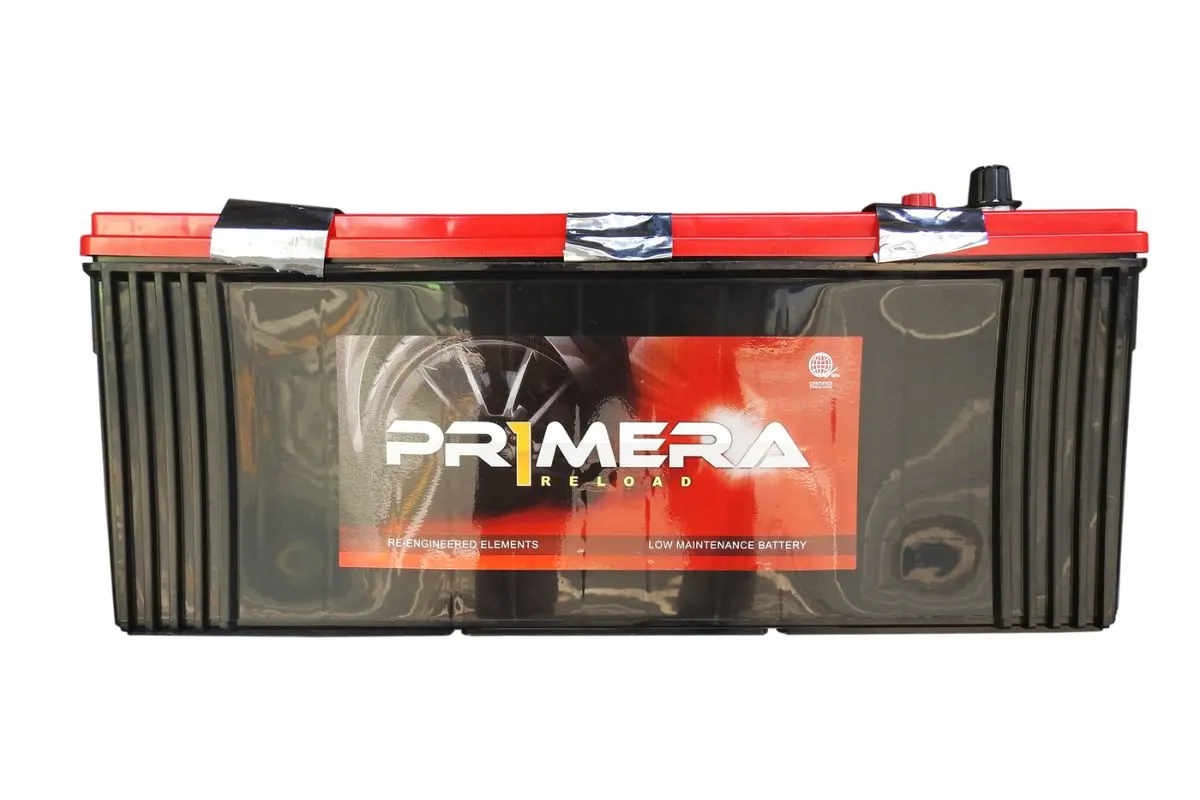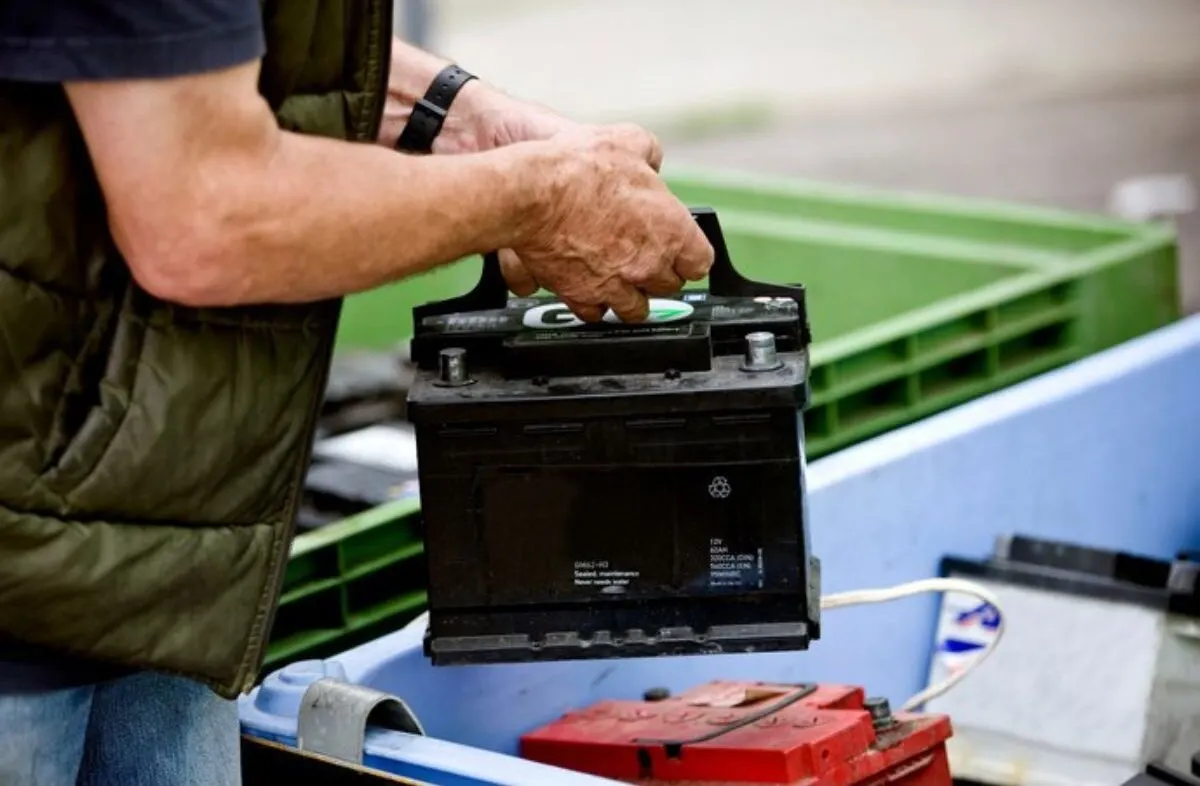
The maximum capacity or gross vehicle weight rating cannot be in excess of limits set for trailers and vehicles. For a Group 24 thru 31 lead-acid traditional battery the maximum weight each is from sixty to seventy pounds.
How much does a 12 volt battery for an RV weigh?
The typical weight for this type of battery is from 130 to 180 pounds. It has a capacity for amp-hours between 230-300. This battery will give you up to 1,500 CCA or cold-cranking amps.
This amount of high cranking capacity creates an option that is versatile for both houses and starting batteries in bigger boats and RVs.
Can I use an 8D battery in my RV?

I have never heard about this type of battery. When I bought my first RV I was overwhelmed by all the different types of batteries available. Should I get a deep cycle battery for my boat and RV?
The option I discovered that appeared to be best is the 8D battery, however, don’t confuse it with the small electronics D-cell battery. Since I am a little confused in regards to the 8D battery, let’s delve into this a little more.
The 8D battery–what is it?
According to the physical size of batteries is how they are placed into certain categories or “groups”. Normally, the bigger a battery is, the more power and capacity it will have. The group 8D battery is one of the biggest 12-volt battery consumers can find available.
The dimensions of an 8D battery are around 21 inches long x 11 inches wide x 10 inches high. When a lead-acid battery is this large it is permitted to have more lead plates inside it that are thicker. This gives the battery a higher capacity for cranking over the amps than other groups of batteries.
Also makes the battery weigh more–around 130 to 180 pounds. This type of battery has 1,500 cold-cranking amps and about 230-300 hours of amp usage. Using this larger, high cranking battery makes for a much more versatile option for both boats and RVs.
One 8D battery can be used instead of three of the smaller lead-acid types, creating an overall reduction in the battery footprint. The biggest drawback to an 8D battery is its size. It can be rather difficult to haul a 200-pound battery around, particularly when there is little space to do it.
What is a 4D battery?

Now I know what an 8D battery is, so what is a 4D battery? This kind of battery is smaller than the 8D and lighter in weight. The dimensions are about 21 inches long x 9 inches wide x 10 inches high and weighing in around 100 to 150 pounds.
You can recognize these batteries are a bit smaller, therefore they have a decrease in cold-cranking amps and capacity. In comparison, the 4D battery’s amp hours are from 150-220 with about 900 to 1300 amps of cold-cranking.
Besides size, what are the differences between the 4D and 8D batteries?
The 4D battery is one group size below an 8D battery. Major differences are the dimensions, amp-hours, capacity, and cold-cranking amps. Besides size, a 4D battery takes a lot longer to charge than do the 8D size batteries.
What can I use a 4D battery for?
I bought a 4D battery, what can I use it for? This type of battery is used in lighting systems, emergency alarms–smoke and carbon monoxide testers, solar power, and standby power. A 4D battery can also be used in your RV. However, an 8D lithium battery is better at replacing marine lead-acid batteries and off-grid larger applications.
The importance of taking care of my RV batteries
To extend my RV batteries life and maintain them correctly, I must have an understanding of how it operates. RV batteries are lead-acid, this means there are many cells, all linked together in a series. There are approximately 2.1 volts produced by each individual cell.
Therefore, your 12-volt battery with a series of six cells will create a voltage output of 12.6 volts. A lead-acid battery is constructed from plates. These plates of lead oxide and lead are dipped in a 64 percent water and 36 percent sulfuric acid electrolyte formula.
Instead of crafting electricity, lead-acid batteries actually store it. How much electrolyte and the lead plate size is the determining factor for the amount of charge the battery stores.
How do I know I am using the right battery?

Besides knowing how the battery operates, it is imperative that I use the right battery for the job at hand. First and foremost is the chassis battery. This is the battery utilized for engine start-up and continuous operation. The starter on my vehicle needs a large current for a brief time in order to start the motor.
Therefore, the batteries used for starting a motor have several thin plates that expose the electrolyte in order to maximize the plate area. This action is what gives that extra current needed for the short bursts required to start the motor. The CCA or Cold Cranking Amps is how a starter battery is rated.
The CCA is determined by how many amps a battery delivers for 30 seconds at zero degrees Fahrenheit without going under 7.2 volts. One should not utilize a deep cycle application for starting batteries.
House batteries are the batteries I can use to keep my 12-volt RV batteries supplied. These batteries are required to be deep cycle batteries. The house batteries must be able to give a steady supply of current for an extended time.
Do not use marine or starter batteries in this kind of setting. True deep cycle batteries have plates that are thicker, they are made to discharge acutely and be recharged frequently. This type of battery is rated according to Amp Hours of AH and lately Reserve Capacity (RC).
What RV battery is heaviest?
I am looking for a heavy duty battery for my RV, which one should I go with? If looking for a deep cycle, heavy-duty battery you will want to check out the VMAXSLR125 AGM 12V 125Ah SLA Rechargeable Deep Cycle Battery. This battery is supplied with capacity at the rate of 125 Ah!
You will find it difficult to find another deep cycle battery that operates in the same manner as this one does. This battery does not require frequent operation to ensure it is topped off at max capacity.
The pros and cons of a heavy battery
Heavy batteries are built extremely well and are superior in strength both internally and externally. This is due to the dedicated way the internal plates that protect the battery’s cycles are reinforced. Resulting in little self-discharge of this battery over the course of time.
There is only one problem regarding this battery. That problem is in comparing it to other batteries that are deep cycle it is extremely large and heavy. Thus, due to its large size, you might be required to verify the compatibility of your RV and the footprint of the battery.
Pros:
- For an increased amount of safety the discharge is fumeless
- Capacity is 125 Ah
- Quality military-grade construction
- Contacts are labeled clearly
Cons:
- Footprint is rather large
- Warranty unclear


